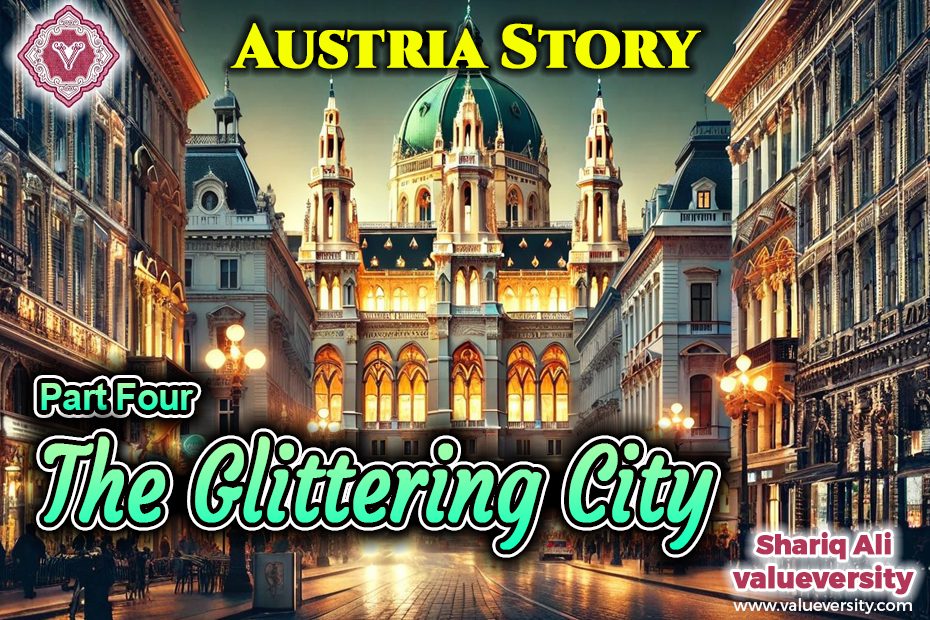Episode 4
Shariq Ali
Valueversity
We boarded the U4 train from Hietzing underground station. Our destination was Karlsplatz, the central station of Vienna’s city center, renowned for its modern architectural design and the beautiful artwork adorning its various entrances.
As we stepped off the train at Karlsplatz, we spotted a small ice cream shop. We exchanged glances, and without a word, bought Stracciatella ice cream—rich with chocolate chips. The first spoonful captivated us, immersing us in Austria’s historic chocolate tradition. Cocoa first reached the royal court in the 18th century, and from there, the royal chefs worked their magic. Vienna’s traditional coffee houses, the famous Sachertorte, and its legendary hot chocolate all stem from this centuries-old legacy. Our ice cream, too, carried the essence of that history.
That evening, we had two objectives in Vienna’s city center:
- To witness the grandeur of Vienna’s architecture before sunset and then again under the enchanting night sky.
- To locate our departure point for Hallstatt the next day to avoid any morning inconveniences.
St. Charles Church (Karlskirche)
The moment we exited the Karlsplatz underground station, we found ourselves standing before St. Charles Church. Built in 1737 by Emperor Charles VI in response to the plague epidemic, the church is a magnificent blend of Baroque architecture with influences from Greek and Roman Renaissance styles. Its striking green dome harmonizes beautifully with the sky, making it one of Vienna’s most distinctive landmarks.
Two towering columns stand in front of the church, intricately carved with scenes from the life of St. Charles Borromeo. These columns command attention, drawing visitors into their detailed narratives. In front of the church, a large fountain shimmered in the evening lights, while a small park surrounded it, offering dedicated pathways for pedestrians and cyclists. We took a seat on one of the benches along the paths, joined by both locals and tourists.
It was a lively square, with the grand façade of the church in the background. Nearby, freelance musicians played their melodies, and we absorbed the breathtaking transition from day to night.
Vienna’s Night Lights and the Opera House
As darkness deepened and Vienna’s streets illuminated in golden hues, we rose from our seats and walked towards the world-famous Vienna State Opera House. The brilliantly lit dome of St. Charles Church now stood behind us, while we ventured deeper into Vienna’s historic heart.
The city’s central avenues felt like pages from a golden history book. Towering buildings glowed like a grand Diwali festival, as if they were not lifeless structures but a dance of light and shadow choreographed by the great architects and artists of the past.
Most buildings showcased the Baroque architectural style, characterized by intricate ornamentation, towering domes, majestic columns, and a sense of grandeur. This aesthetic defines Vienna, marking the city’s royal opulence from the 17th and 18th centuries.
It felt as though every building whispered a story, each window and column echoing the past.
Vienna’s beauty lies not only in its architecture but also in the way its lighting transforms the city into an enchanting spectacle. The harmony between light and darkness creates a mesmerizing ambiance, leaving a lasting impression on all who witness it.
Guided by Google Maps, we strolled through Vienna’s streets and avenues, drawing closer to the Opera House…
(To be continued…)
